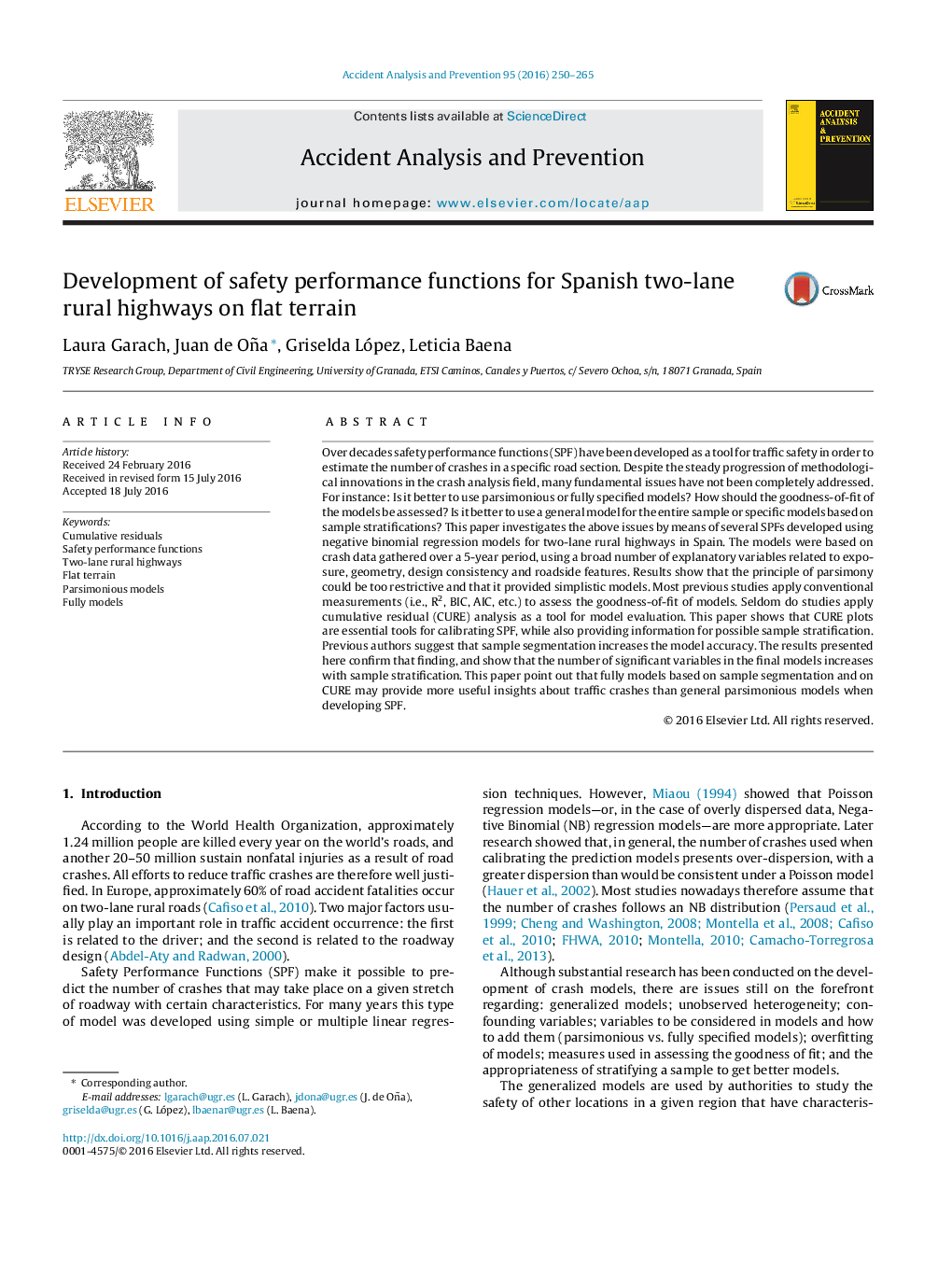| کد مقاله | کد نشریه | سال انتشار | مقاله انگلیسی | نسخه تمام متن |
|---|---|---|---|---|
| 571933 | 877327 | 2016 | 16 صفحه PDF | دانلود رایگان |
• This study develops Safety Performance Function (SPF) analyzing cumulative residuals for two-lane rural highways.
• On the basis of cumulative residual analysis the sample were divided on ranges of the AADT variable for obtaining better models.
• In the AADT > 4000 veh/day database the percentage of heavy vehicles and the curvature change rate (CCR) have a large effect on the crash frequency.
• In the AADT < 4000 database, the percentage of shoulder and the driveway density have a high influence on crashes.
Over decades safety performance functions (SPF) have been developed as a tool for traffic safety in order to estimate the number of crashes in a specific road section. Despite the steady progression of methodological innovations in the crash analysis field, many fundamental issues have not been completely addressed. For instance: Is it better to use parsimonious or fully specified models? How should the goodness-of-fit of the models be assessed? Is it better to use a general model for the entire sample or specific models based on sample stratifications? This paper investigates the above issues by means of several SPFs developed using negative binomial regression models for two-lane rural highways in Spain. The models were based on crash data gathered over a 5-year period, using a broad number of explanatory variables related to exposure, geometry, design consistency and roadside features. Results show that the principle of parsimony could be too restrictive and that it provided simplistic models. Most previous studies apply conventional measurements (i.e., R2, BIC, AIC, etc.) to assess the goodness-of-fit of models. Seldom do studies apply cumulative residual (CURE) analysis as a tool for model evaluation. This paper shows that CURE plots are essential tools for calibrating SPF, while also providing information for possible sample stratification. Previous authors suggest that sample segmentation increases the model accuracy. The results presented here confirm that finding, and show that the number of significant variables in the final models increases with sample stratification. This paper point out that fully models based on sample segmentation and on CURE may provide more useful insights about traffic crashes than general parsimonious models when developing SPF.
Journal: Accident Analysis & Prevention - Volume 95, Part A, October 2016, Pages 250–265
